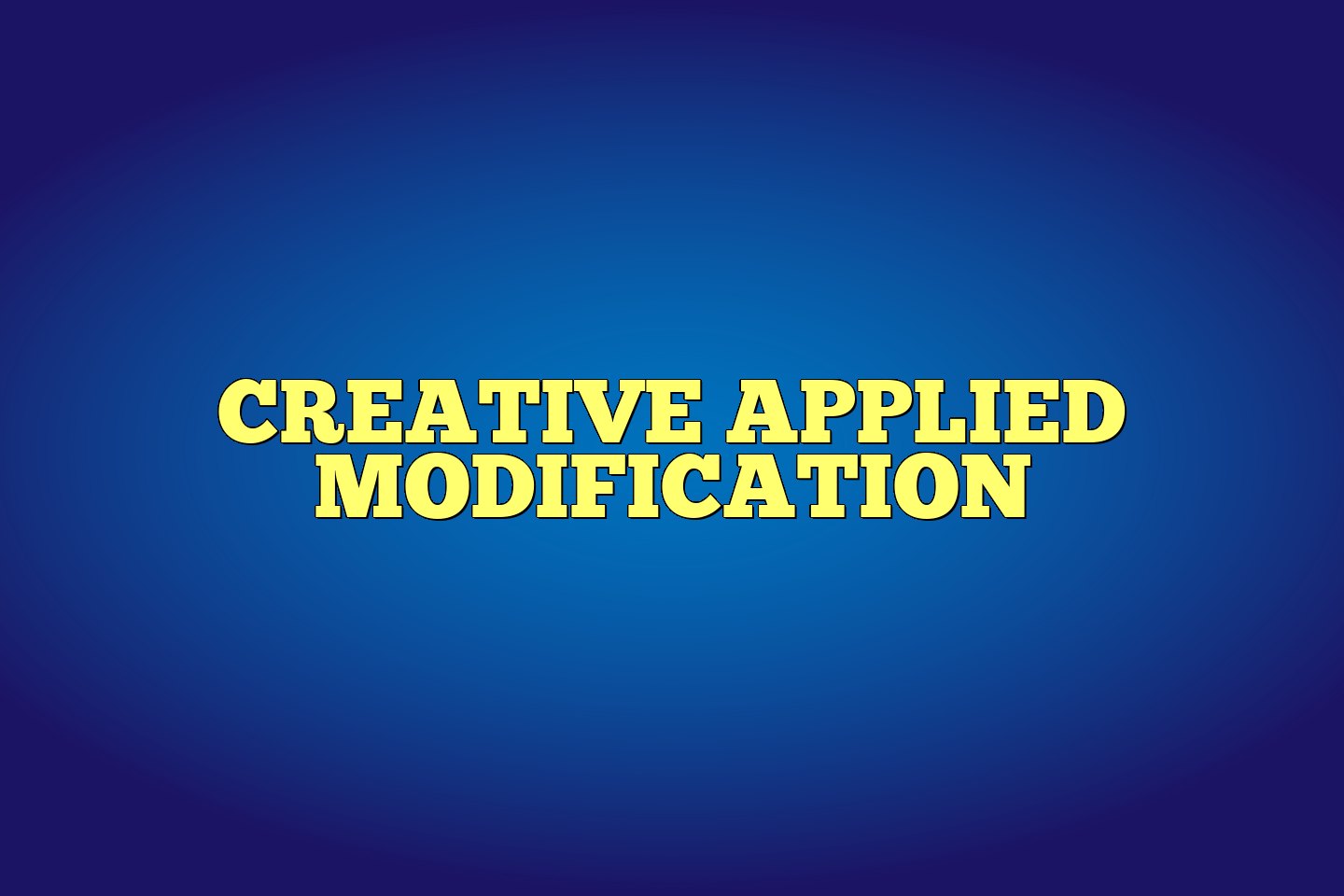In today’s fast-paced and ever-changing world, creativity and innovation are crucial for the success of any project or concept. In order to stand out and make a lasting impact, it is important to constantly think outside the box and come up with unique and original ideas. This is where creative modifications play a vital role. By applying various techniques and methods, one can transform a project or concept into something that is both innovative and effective. In this article, we will explore the different approaches and strategies that can be used to apply creative modifications, and how they can enhance the overall outcome of a project or concept.

The Nobel Winner physiologist Pavlov has developed a method of a combination of a conditioned reflex with unconditional, that caused strong hormonal changes in an organism. The certain sound in an open-air cage for dogs, was accompanied by their feeding. After numerous recurrences, all physiological effects of feeding accompanied reproduction only one sound: allocation of gastric juice, strengthening of movements of intestines and emission of digestive hormones, change of glucose blood. Its follower, the behavioral therapist from Russia, Sergey Sokolovsky, has developed this principle in «САМ”- (Creative Applied Modification) for conversion transition to alternative forms of reaction and behavior. At this technique originally in the standardized conditions (more often, before a night sleep) the technique of deep rest is developed. Under the control of the psychotherapist, the patient studies to connect it with a conditioned reflex: an internal word and the certain image. Subsequently, under the law of reflexes of Pavlov’s, mental reproduction of internal word and image, reflex change and transition to new reaction or behavior, occurs much easier and more quickly on new emotional and mental background and absence of internal resistance. At performance of a technique, for braking an old reflex the patient studies in advance to displace a locus of the control over a situation. The technique has shown the efficiency at anxiety, depression, PTSD and addictive disorders.